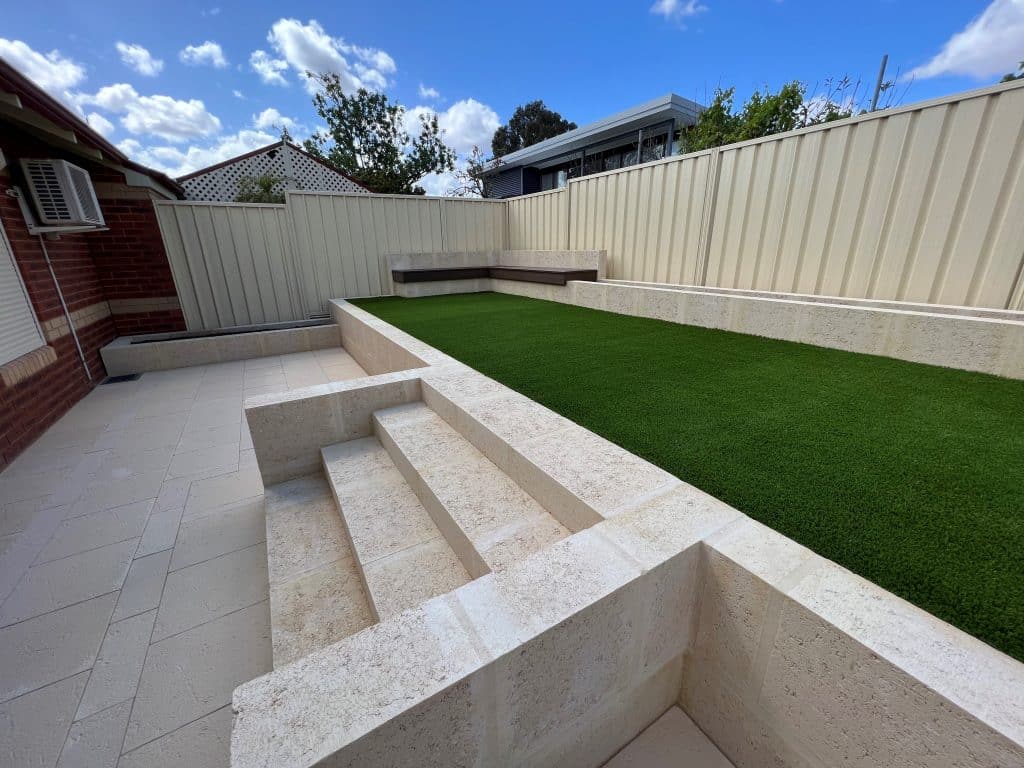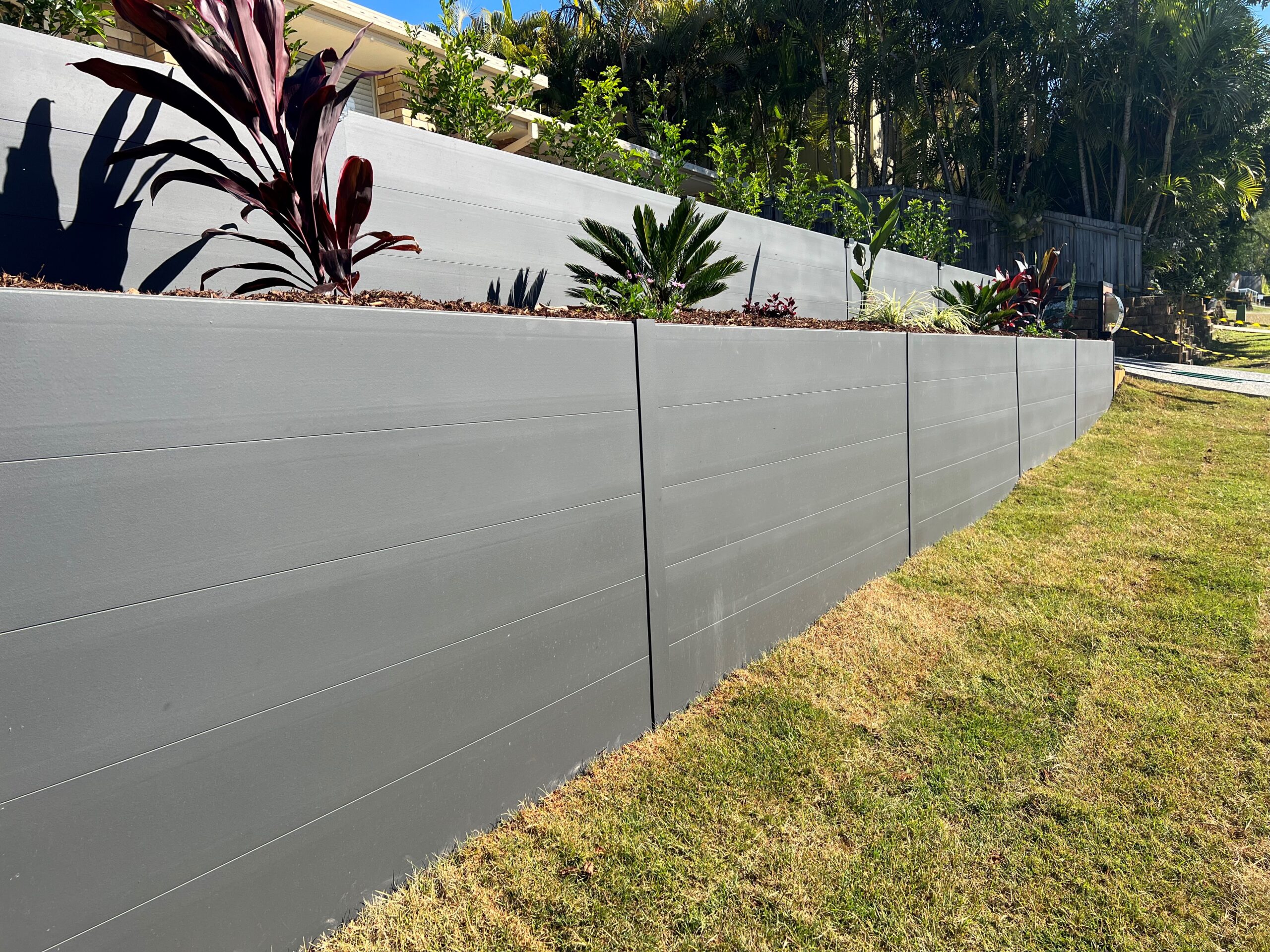Just How Retaining Walls Sunshine Coast Add Worth and Functionality to Your Building
Ensuring Structural Integrity: The Value of Correctly Constructed Retaining Walls in Stopping Slope Failing
In the world of civil engineering and building and construction, the significance of correctly constructed retaining wall surfaces in avoiding slope failure can not be understated. By discovering the complex interaction in between these components, a deeper understanding of the essential role that preserving wall surfaces play in preserving architectural integrity and preventing incline failing emerges.
Duty of Retaining Walls in Stability
The necessity of retaining wall surfaces in making certain slope stability is extremely important in civil engineering practices. Keeping wall surfaces serve a vital duty in stopping dirt erosion, taking care of water drainage, and maintaining the structural integrity of slopes. By supporting upright or near-vertical grade changes, retaining walls aid to redistribute side pressure exerted by the dirt, thereby reducing the risk of incline failing.
One trick function of maintaining wall surfaces is to combat the pressure of gravity acting upon the dirt mass behind them. This is attained via correct style and building, which thinks about factors such as soil kind, wall elevation, water drainage arrangements, and potential surcharge loads. By successfully maintaining soil within specified borders, these frameworks assist to stabilize inclines and stop landslides.
Moreover, maintaining wall surfaces add to the visual appeals of landscapes while providing practical benefits. They can produce terraced degrees for landscaping, support highways or frameworks on hills, and boost the total usability of sloped surface. Basically, maintaining walls play an important duty in maintaining slope security and ensuring the safety and security and longevity of civil design projects.
Variables Influencing Wall Performance
Factors that influence the effectiveness of keeping wall surfaces include soil properties, wall surface design, and exterior tons. Dirt residential properties play a vital function in establishing the security and performance of a preserving wall. Elements such as soil kind, communication, interior rubbing angle, and groundwater problems can impact how well a wall preserves the soil behind it. The layout of the keeping wall is one more key factor that affects its performance. Appropriate wall surface style takes into consideration elements like wall surface height, wall surface type (e.g., gravity wall surfaces, cantilever walls), support materials, drain systems, and building methods to ensure the wall surface can stand up to the side stress exerted by the retained soil. Additionally, outside lots, such as surcharge lots from nearby structures or website traffic, seismic pressures, and water stress, should be meticulously examined throughout the design and construction stages to make sure the wall can adequately stand up to these external pressures. By taking into consideration these variables comprehensively, designers can build keeping walls that efficiently prevent incline failure and guarantee lasting architectural honesty.
Layout Factors To Consider for Maintaining Wall Surfaces
Incorporating the vital aspects of soil properties and exterior lots right into the architectural layout process is necessary for developing reliable preserving walls that ensure incline security. When designing preserving wall surfaces, engineers should meticulously evaluate the qualities of the bordering dirt, including its kind, water drainage, and compaction homes. Comprehending these soil residential or commercial properties is important for establishing the proper wall support, density, and elevation required to withstand the lateral stress exerted by the soil mass.
Additionally, external tons such as additional charge lots from neighboring frameworks or web traffic, as well as seismic pressures, should be thought about during the layout stage. These tons can considerably influence the security and efficiency of a maintaining wall surface, necessitating using appropriate important source style techniques and materials to minimize potential failing dangers.
Additionally, the choice of suitable materials, such as concrete, rock, or timber, should straighten with the site-specific conditions and aesthetic requirements. Element of security factors to consider, drainage stipulations, and building techniques are likewise essential elements that influence the total layout and functionality of preserving wall surfaces in avoiding slope failing. By meticulously thinking about these style considerations, engineers can make sure the architectural stability and lasting stability of retaining wall surfaces.

Building Best Practices for Resilience
When constructing preserving walls for optimal sturdiness and longevity, adherence to industry-standard strategies and precise attention to information are paramount. To make certain the sturdiness of a preserving wall, appropriate site prep work is vital.
Including reinforcement techniques, such as geogrids or steel bars, can enhance the structural integrity of the keeping wall and prevent potential failings. Proper backfilling procedures, including compaction and water drainage considerations, are also crucial Discover More Here for the wall surface's sturdiness. Routine upkeep and inspections are advised to attend to any signs of wear, disintegration, or architectural problems immediately. By complying with these building and construction ideal practices, preserving wall surfaces can withstand the test of time and efficiently prevent slope failure.
Importance of Proper Maintenance
Routine upkeep is necessary for protecting the architectural stability and capability of preserving wall surfaces over time. To make certain that preserving wall surfaces proceed to do their designated function efficiently, normal evaluations must be carried out to determine any indicators of wear and tear.

Verdict
Finally, keeping wall surfaces play a vital role in guaranteeing structural integrity and preventing incline failure. By taking into consideration aspects influencing wall surface effectiveness, adhering to create factors to consider, complying with building and construction ideal methods, and executing appropriate upkeep, the resilience of preserving walls can be made best use of. Retaining Walls Sunshine Coast. It is vital to identify the relevance of appropriately built maintaining wall surfaces in preserving security and stopping potential dangers related to incline failure
Aspects that influence the performance of preserving walls consist of soil properties, wall design, and outside lots. Correct wall style takes into consideration elements like wall surface height, wall kind (e.g., gravity walls, cantilever wall surfaces), reinforcement materials, drain systems, and construction techniques to make certain the wall surface can endure the side pressure applied by the preserved dirt. look here By taking into consideration these variables thoroughly, engineers can create keeping wall surfaces that efficiently protect against incline failing and ensure long-term architectural honesty.
Upkeep tasks might consist of removing water drainage systems to stop water build-up behind the wall, repairing any kind of visible cracks or damages, and making sure that the wall is totally free from plant life that might apply stress on the framework. By taking into consideration variables influencing wall performance, sticking to design factors to consider, following building best methods, and carrying out proper maintenance, the durability of maintaining walls can be taken full advantage of.